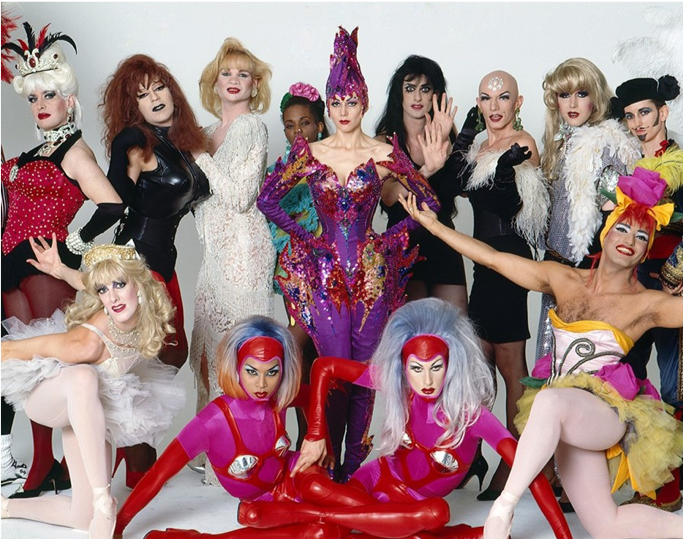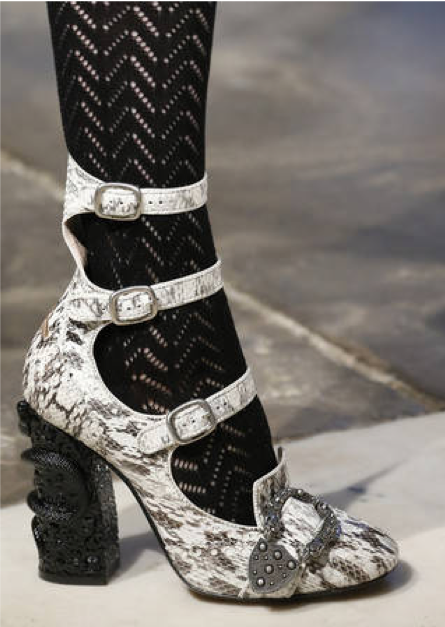IT'S A QUEER OLE YEAR:TV
SHOWS TO WATCH IN 2018
BY ISOBEL MOORE
BY JESSICA BROADBENT
BY JESSICA BROADBENT
LESBIANS: GOING BEYOND
THE QUIBBLES
BY CHESKA HARDIE
BY BILLY WELSBY
BY BILLY WELSBY
BY ISOBEL MOORE & BILLY WELSBY
BY ISOBEL MOORE & BILLY WELSBY
BY CHESKA HARDIE
BY ISOBEL MOORE
BY ELLA JELLYMAN
BY ELLA JELLYMAN








Throughout history, the LGBTQ+ community have adjusted their style and behaviour in order to communicate their sexuality due to being side-lined and marginalised in a mass heterosexist culture.
Now, the influence of subcultural trends such as drag, leather and uniform have been adopted from modern fashion through the aesthetic frame of LGBTQ+ life and culture.
Drag has been around for decades and was first introduced in Shakespeare's theatrical troupes. In recent years, drag has begun to gravitate towards mainstream culture with the introduction of the Emmy winning show; RuPaul's drag race which embraced the normalization of drag to society. One of the biggest influences drag has had on fashion is the notion of gender ambiguity. This has been evident through designer collections by DSquared2 and Palomo Spain who are wanting to erase the previous conceptions of what it means to be male and embrace the freedom of gender expression.
Stylist Zoe Hawkins has worked in the fashion industryfor 10 years and explains that due to the growing understanding of diverse sexualities, designers seek to break the stereotypes and give every individual the opportunity to wear what they want without being stereotyped or labelled.
Gucci's 2015 runway show displayed men wearing pussy-bow blouses, a style of blouse typically associated with women. Furthermore, models wore gender-concealing masks on Rad Hourani's runway show in the same year to represent the ideology of diverse sexuality.
A trend which the LGBTQ+ community has brought to fashion is the rise of the metro-sexual man – a man who puts effort and pride in his appearance. The LGBTQ+ community has influenced this trend immensely due to freedom of expressing oneself in their own way which has made metro-sexuality seem less extraordinary. Men now feel more comfortable to go into retail shops and buy items that are usually associated with women, such as skinny jeans and cardigans.
Queercore is a term referred to a homosexual youth movement that rejects homosexual stereotypes and celebrates this with punk-style music with lyrics supporting the lifestyle.
The Queercore scene forever changed the world and society through art, music and fashion. Derived from the punk movement and best known for focusing on societal issues of gay, lesbian, non-binary and transgendered people.
The trend within the Queercore sub-culture was all about DIY by adding to and adapting garments to suit individual style and tastes. Leather and buckles were heavily featured in the trend with designer collections following suit by making their collections more 'edgy' and including leather pieces.
Last year, Gucci brought out its first ''queercore'' collection which features a range of brogue style shoes inspired and reflected by the gay punk movement from the 1980's. Reflecting the spirit of the subculture, the styles are fitted with multiple straps studs and metal embellishments, including the iconic Gucci symbol of the Dionysus buckle.
The Club Kids was a group of young, gender fluid, dance club personalities who were notable for its members' flamboyant behaviour and outrageous costumes.
The Club Kids was all about being eccentric, elaborate and embracing individuality.
Designers such as John Galliano and Vivienne Westwood took immense influence in the 80's and present day from The Club Kids – creating a dynamic decade of fashion.
The sub-cultures influence of 'raving' and 'partying' allowed designers to experiment and have fun with fashion by designing flamboyant looks experimenting with textures, patterns and colours.
ASOS featured a 'Club Kids' trend guide on their website which inspired it's audience to go 'freakin' crazy in bright bombers, tube dresses, chunky chains and sequin clad trews'. This demonstrates how an 80's sub-cultural trend is still being recycled and revamp in today’s society whist still retaining the same 'fun' elements to the trend.


